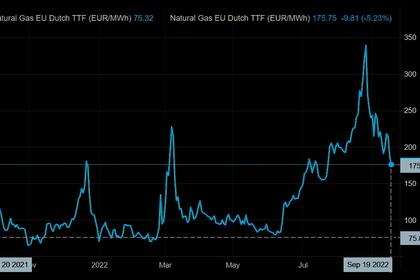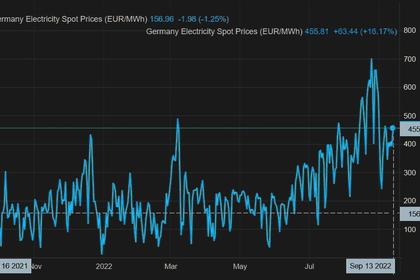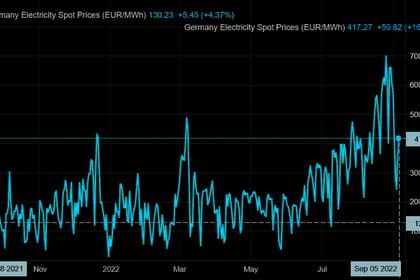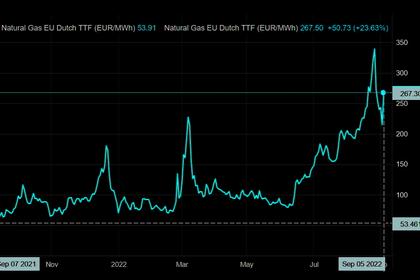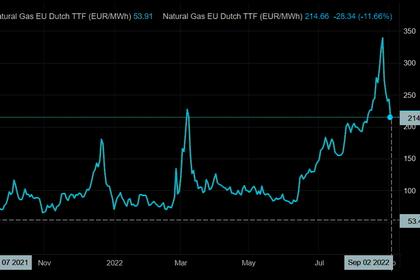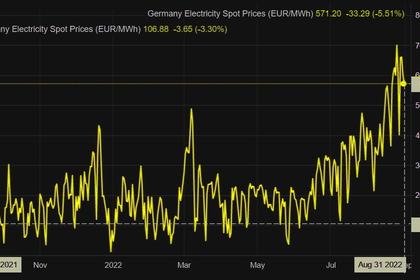
EUROPEAN SPACE SOLAR POWER
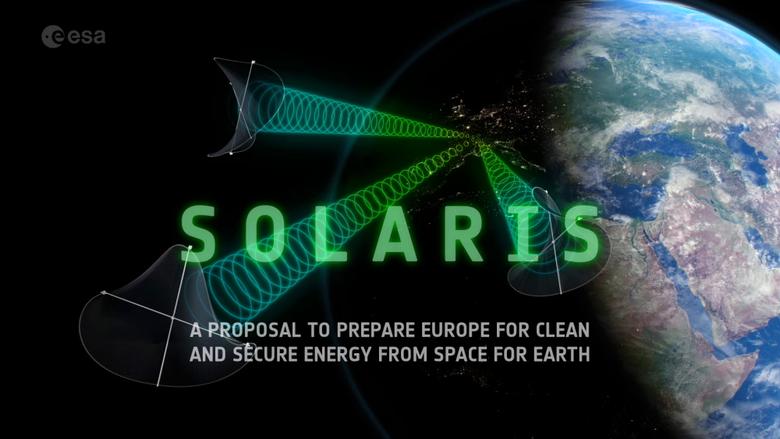
SPACEWATCH.GLOBAL - The word “solaris”, which until recently evoked a 1972 Soviet science-fiction movie directed by Andrey Tarkovsky, is taking on new meaning. “SOLARIS” is now a proposal for a preparatory program of technology research & development envisioned by the European Space Agency (ESA) to tackle the techno-economic feasibility of space-based solar power (SBSP).
That is, provided that ESA succeeds in getting this 3-year study funded by the upcoming ESA Ministerial Council Meeting slated for November 2022 (CM22). If successful at CM22, the next step for ESA and SOLARIS would be CM25, which will, if all signs are positive, allow them to proceed toward the SBSP implementation stage, starting with a sub-scale in-orbit demonstrator around 2030: the full-scale mega-structure development programme would then ramp up aiming at a first operational orbiting power station by 2040 and the 30 years exploitation phase would end up with decommissioning in 2070. Subsequent stations would be rapidly built and launched after 2040 to provide perhaps 10% or 350 TWhrs of Europe’s electricity needs by 2050.
This Financial Times video titled “How SBSP can save the planet” highlights the long SBSP journey from a concept to a sustainable system. The ESA introductory clip “SOLARIS: Preparing for space-based solar power” is available on the ESA website and its YouTube account.
Space-Based Solar Power in the US and the Indo-Pacific
In the US, the mid-2000s marked a new tipping point for SBSP, when Reusable Launch Vehicles (RLVs) emerged as a credible game changer for reducing launch costs. In 2007, the US National Security Space Office conducted a study “Space based solar power as an opportunity for Strategic Security”. In 2012, John C. Mankins, former NASA physicist and SBSP expert, published a working paper detailing the project ‘SPS-ALPHA the first practical solar power satellite via arbitrarily large phased array’. In 2014 Mankins returned to the subject, publishing “The Case-Space-Solar-Power”.
SBSP was pitched again in 2016 during the closing months of the Obama administration in this video “Space-Based Solar Power – a solution to the carbon crisis”. More recently, in May 2022, Nikolai Joseph, of NASA’s Office of Technology, Policy and Strategy, announced the agency would conduct a refresher study of SBSP for publication in September 2022.
Japan had got a head-start in wireless power transmission in the 1980s. By 2008, it had established a “Basic Plan for Space Policy” with the realisation of SBSP as a national goal (first version Fiscal Year 2008, third version Fiscal Year 2015). The Japanese Ministry of Economy, Trade and Industry produced a roadmap for the implementation of SBSP by the 2050s, with the Japan Aerospace Exploration Agency (JAXA) taking the lead with an implementation map for ground and orbital demonstrations aiming at an orbital SBSP satellite system.
South Korea is also working on SBSP and may further capitalize on its 2022 first satellite launch. So does India. And Russia is still in the game. As for China, in 2015, the China Academy for Space Technology (CAST) showcased its first SBSP roadmap at the International Space Development Conference, with a goal of gigawatt-class power generation in geostationary orbit by 2050. Recent successes in wireless power transmission allow CAST to confidently target low Earth orbit testing in 2028 and a megawatt-class geostationary SPSB experimental satellite by 2030.
SBSP could provide competitively-priced electricity to European homes and businesses by 2040.
ESA and Europe looked at SBSP in 2005 and again in 2020
In the mid-2000s, the ESA Advanced Concept Team commissioned, to a consortium of consultants and academics, a study, titled “Earth and space-based power generation systems: a comparison study”, whose results, heavy on launching costs reduction and other key parameters analysis, came out in January 2005. Then, after a 15 years hiatus, quite similar to the US situation, ESA released a new SBSP game plan in summer 2020, immediately followed by a call for ideas in September 2020. Of the 85 ideas received, 13 were selected for funding.
Next, in December 2021, ESA hosted an international workshop on Space-based Solar Power for Net Zero by 2050, which attracted more than 360 people from both the space domain and a variety of non-space sectors. Then in January 2022, ESA officially “reignited Space-based Solar Power research”.
In July 2022, ESA issued a new “Request for Information for Breakthrough Technologies for Space-based Solar Power” and, while clarifying the purpose of SOLARIS ahead of CM22, ESA announced the release of the 2 SBSP cost vs benefits studies for later in the summer of 2022. Angeliki Kapoglou, a researcher with the University College London Institute for Public Purpose and Innovation and a member of ESA’s strategy and innovation team in the Directorate of Human and Robotic Exploration, had reminded us earlier of the objectives: “SOLARIS would be structured around the key development axes needed to establish the technical, political, and programmatic basis of a decision on a European SBSP development programme in 2025. It would undertake system-level studies and technology developments, in partnership with European industry, to mature the technical feasibility and assess the benefits, implementation options, commercial opportunities, costs and risks of SBSP. SOLARIS will also address potential environmental, health and safety issues and challenges related to regulation and international space policy coordination. The particularity is that all these technological areas (in space manufacturing and assembly, space robotics, reusable launchers, mass-efficiency photovoltaics, ISRU, microwave power beaming, etc) have applications and benefits in multiple other space applications. So, even if the decision, later on, is not to proceed with SBSP, benefits from the R&D technology developments will still be valuable for the European space sector”.
SOLARIS and the ESA ramp-up to CM22
On the 16th of August, the release of 2 independent studies punctuated years of SBSP efforts by ESA. These 2 studies, by British and German consultancies Frazer Nash and Roland Berger, are available on the ESA website. In his social media posts covering the release, Joseph Aschbacher mentioned that “At CM22, I will propose a SBSP preparatory programme to Member States called SOLARIS. We have the main building blocks already, but let me be clear: for the project to succeed, much technology development and funding is still needed.“ Kapoglou further reinforced the above statements stating that “These independent studies, based on different technical solutions, both concluded that SBSP could provide competitively-priced electricity to European homes and businesses by 2040, displacing fossil-fuel sources of energy and complementing existing renewable such as solar PV and wind, reducing the need for large-scale storage solutions”.
The SBSP system would cost 33.4 billion euros to build and 31.1 billion euros to operate for 30 years, in case of medium technological advances.
What do we learn from the 2022 Frazer Nash and Roland Berger SBSP studies?
While the Roland Berger study (in collaboration with OHB) is based on the above-mentioned John C. Mankins SPS-ALPHA architecture, the Frazer Nash study is based on a more recent British alternative (2017): named CASSIOPeiA as in Constant Aperture, Solid-State, Integrated, Orbital Phased Array. This architecture could operate on a different, lower, orbit than SPS-ALPHA and introduces some improvements in antenna directional control. These architectures remind us of the necessity to coordinate internationally SBSP orbital slots and frequency allocations in due time. Importantly, both architectures utilize low-power density microwave frequencies which are expected to be safe for birds, people, planes, and satellites that may pass through the beam.
Frazer Nash had already published a SBSP study for the UK government back in September 2021. Its executive summary clearly made the case for a UK SBSP initiative. In 2022, based on an order of magnitude of 54 satellites (each supplying 1.44 gigawatts) for the SBSP architecture by 2070, the Frazer Nash study concluded that benefits of 601 billion euros would exceed development and operational costs of 418 billion euros. The study noted that a significant portion of benefits includes the savings on both terrestrial (fossil fuel) energy generation and carbon emissions costs. As for the “net present value” of the benefits of a European SBSP system from 2022 to 2070, it would range between 149 and 262 billion euros. The Frazer Nash study is keen on defining the optimal balance between public (government) and private investors’ funding, using hurdle rates. Its granular analysis generates electricity costs which address the larger issue of electricity affordability based on an energy mix.
With the VALCoE stabilizing at 91 EUR/MWh for nuclear, and in the 37-58 EUR/MWh range for other renewables, SBSP becomes really competitive.
The Roland Berger methodology reflects the disparity of situations among continental Europe countries when it comes to their energy policies. The study acknowledges that uncertainties and variation ranges for the key parameters can only lead to wide-ranging estimates, yet it thrives for a way forward. The study concludes that, based on the John C. Mankins SPS-ALPHA architecture, the SBSP system would cost 33.4 billion euros to build and 31.1 billion euros to operate for 30 years, in case of medium technological advances. In case fast and substantial technological advances occur, the costs could go down to as little as 8.1 billion euros to build and 7.5 billion euros to operate SBSP for 30 years. Roland Berger suggests that Europe will need to develop a 500-1,000 euro per kg range for reusable launchers capacities to make this happen. The uncertainty range on cost assumptions is reflected in the wide range of electricity costs. Roland Berger, using metrics such as VALCoE (Value-Adjusted Levelized Cost of Electricity) and scenario-based projections to evaluate and compare options between power generation technologies, draws the following conclusion for the price of electricity on the 2050 horizon: with the VALCoE stabilizing at 91 EUR/MWh for nuclear, and in the 37-58 EUR/MWh range for other renewables, SBSP becomes really competitive as a ‘baseload’ (continuous, non-intermittent) electricity source that can displace fossil fuels and complement intermittent ground-solar and wind energy.
European SBSP: where do we go from there?
Part of the problem is the fact that we’re dealing with an energy policy issue before dealing with the space development issue. ESA might be able to move the needle forward, but it is up to European leaders to act on both the energy crisis and space domain autonomous capacity building. Several questions need to be evaluated at this stage of development:
- Could not only national space agencies but also energy governing bodies act as anchor customers for SBSP, especially for start-ups?
- Could the increased demand for reusable launcher services become, that are competitive at a scale that could be acted on? When the time comes for thousands of launches to build SBSP in orbit, if Europe will still depend on SpaceX it will not master its pricing (and that’s not autonomy either).
- Could the need for a billion-euro level of capital to support equity and debt investment be implemented?
- Could fossil fuels corporates who already diversified in green energy get in the SBSP game?
- Could European public research institutes, together with corporate and start-up innovators, position themselves along made-in-Europe SBSP value chains?
- Could protecting European and global SBSP assets in orbit from harmful interference motivate the European defense sector to become a financing and implementation stakeholder for SBSP?
Hopefully the coming soon CM22 will acknowledge SBSP as a key potential future driver of the need for member states in Europe to go into substantive investment in the space domain for economic and energy security purposes. An eventual SBSP choice could mean a radical transformation for Europe: it could mean energy transformation and space development as an instrument of its diplomacy, and a final closure from energy dependency. This will require however a clear communication campaign on why we need to invest in future energy infrastructures, instead of subsidizing overpriced fossil fuels producers. And that no, these beams won’t fry birds or humans.
-----
Earlier:
